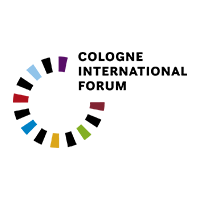Subproject 2: The Socio-Economic Integration of Migrants and Refugees From Myanmar Living in the Border Region
In Conversation with Simon Becker
Since the military coup in February 2021, the situation in Myanmar has deteriorated dramatically. Thousands of people have been arrested, been killed, or escaped to neighbouring countries, especially Thailand. Nearly 800,000 people have fled their homes since the coup (UNHCR 2022b).
Within Myanmar, a large portion of internally displaced persons (IDPs) have escaped from the military-controlled urban and rural areas into “liberated” territories controlled by armed ethnic groups. Of the armed ethnic groups bordering Thailand, IDPs have relocated to the Karen-controlled area opposite Mae Sot, the Karenni-controlled area opposite Mae Hong Son, and the Shan State opposite Chiang Rai.
Based on the above context, there are many casual workers who live in refugee camps in the “liberated” territories of Myanmar but cross the border into Thailand to earn money for buying food for the camps or weapons for the resistance movement. This is an important factor for the regional economies in the Thai regions of Mae Sot, Mae Hong Son, and Chiang Rai. Those who have escaped to Thailand rather than settling in a “liberated” territory often work illegally or attempt the difficult process of obtaining legal recognition as workers and students. Unable to safely go back to Myanmar or to stay legally in Thailand, where they are not eligible for refugee status, the question arises as to how these displaced people can be integrated into the developing monetary Thai economy (where they are already an essential factor of consumption and production). Thailand has a sophisticated monetary and banking system to which undocumented refugees and workers must have access in order to integrate.
With close to 2 million Burmese living in Thailand, the social and economic integration of refugees into Thai society also poses benefits for the country. Because Thailand has an aging population, these migrants can potentially become economic assets. However, it remains unclear how they would best be integrated. Given the lack of official data, we seek to estimate the size of this displaced population in the border region and their integration into local economies. It is our intention to understand how well migrants and refugees are embedded into local economic activities. Special attention will be paid to their employment situation (formal and/or informal) and their entrepreneurship activities (either necessity or opportunity driven). Additionally, skill and qualification levels will be assessed as they build a fundamental base for labour market integration. To this end, a mixed method approach will be applied combining a household survey and a series of explorative interviews with migrants and refugees and other stakeholders (such as NGOs and government officials).
Researchers Involved:
